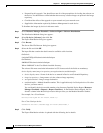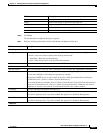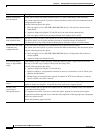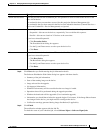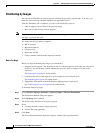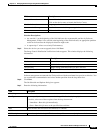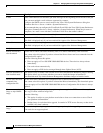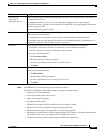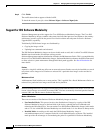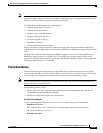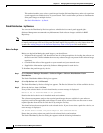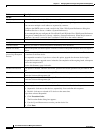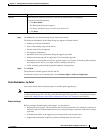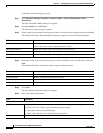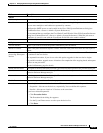
12-68
User Guide for Resource Manager Essentials 4.1
OL-11714-01
Chapter 12 Managing Software Images Using Software Management
Software Distribution
Step 9 Click Finish.
The notification window appears with the Job ID.
To check the status of your job, select Software Mgmt > Software Mgmt Jobs.
Support for IOS Software Modularity
Software Management provides support for Cisco IOS Software Modularity Images. The Cisco IOS
Software Modularity Images combine subsystems into individual processes and enhances the memory
architecture in order to provide the process level fault isolation and subsystem In-Service Software
Upgrade(ISSU) capability.
Traditionally, IOS Software images are distributed by:
• Copying the image to disk.
• Updating boot commands and rebooted.
The IOS Software Modularity images can be run in this mode as well, this is called Cisco IOS Software
Modular non-install mode (also known as binary mode).
Software Management supports distribution of Patches and Maintenance Packs. This is accomplished by
the use of Cisco IOS Software Modularity Images. Software Modularity enhances the IOS infrastructure
to allow selective system maintenance through individual patch upgrades. See
Patch Distribution for
more details.
Patches
A patch is a single fix which may affect one or more subsystems. Patches can only be installed to a search
root, where a base image exists. Patches are released for a particular base image version and device
platform.
Maintenance Pack
A Maintenance Pack includes one or more patches. This is applied like a Patch. Maintenance Packs are
released for a particular base image version and device platform.
Note Software Management does not support downloading Patches/Maintenance Packs from Cisco.com. The
reason is these images are available in external URL. You have to manually download patches from the
external URL and add the same to Software Repository.
Modes of Distribution
There are two modes of distribution of Software Modularity images to devices:
• Non Installed Mode: This process involves the distribution of images by copying of the IOS
Software Modularity images to the hard disk of the device, updating the boot commands and
rebooting the OS on the device. You can run the Cisco IOS Software Modularity Images in this mode
and so it is also called IOS Software Modularity non-install mode. It is also known as binary mode.
• Installed Mode: According to this mode the IOS Software Modularity image is
extracted/uncompressed to a compact flash with a well defined directory structure. The installed
mode provides the advantage of accomodating the point fix capabilities of Software Modularity.



